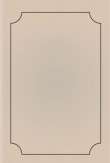قراءة كتاب All About Coffee
تنويه: تعرض هنا نبذة من اول ١٠ صفحات فقط من الكتاب الالكتروني، لقراءة الكتاب كاملا اضغط على الزر “اشتر الآن"
Transcriber’s Note
The punctuation and spelling from the original text have been faithfully preserved. Only obvious typographical errors have been corrected.
All About
Coffee

ALL ABOUT COFFEE
 COFFEE BRANCHES, FLOWERS, AND FRUIT
COFFEE BRANCHES, FLOWERS, AND FRUITShowing the Berry in its Various Ripening Stages from Flower to Cherry
(Inset: 1, green bean; 2, silver skin; 3, parchment; 4, fruit pulp.)
Painted from life by Blendon Campbell
ALL ABOUT
COFFEE
By
WILLIAM H. UKERS, M.A.
Editor
THE TEA AND COFFEE TRADE JOURNAL

NEW YORK
THE TEA AND COFFEE TRADE JOURNAL COMPANY
1922
Copyright 1922
BY
THE TEA AND COFFEE TRADE JOURNAL COMPANY
New York
International Copyright Secured
All Rights Reserved in U.S.A. and
Foreign Countries
PRINTED IN U.S.A.
To My Wife
HELEN DE GRAFF UKERS
PREFACE
Seventeen years ago the author of this work made his first trip abroad to gather material for a book on coffee. Subsequently he spent a year in travel among the coffee-producing countries. After the initial surveys, correspondents were appointed to make researches in the principal European libraries and museums; and this phase of the work continued until April, 1922. Simultaneous researches were conducted in American libraries and historical museums up to the time of the return of the final proofs to the printer in June, 1922.
Ten years ago the sorting and classification of the material was begun. The actual writing of the manuscript has extended over four years.
Among the unique features of the book are the Coffee Thesaurus; the Coffee Chronology, containing 492 dates of historical importance; the Complete Reference Table of the Principal Kinds of Coffee Grown in the World; and the Coffee Bibliography, containing 1,380 references.
The most authoritative works on this subject have been Robinson's The Early History of Coffee Houses in England, published in London in 1893; and Jardin's Le Café, published in Paris in 1895. The author wishes to acknowledge his indebtedness to both for inspiration and guidance. Other works, Arabian, French, English, German, and Italian, dealing with particular phases of the subject, have been laid under contribution; and where this has been done, credit is given by footnote reference. In all cases where it has been possible to do so, however, statements of historical facts have been verified by independent research. Not a few items have required months of tracing to confirm or to disprove.
There has been no serious American work on coffee since Hewitt's Coffee: Its History, Cultivation and Uses, published in 1872; and Thurber's Coffee from Plantation to Cup, published in 1881. Both of these are now out of print, as is also Walsh's Coffee: Its History, Classification and Description, published in 1893.
The chapters on The Chemistry of Coffee and The Pharmacology of Coffee have been prepared under the author's direction by Charles W. Trigg, industrial fellow of the Mellon Institute of Industrial Research.
The author wishes to acknowledge, with thanks, valuable assistance and numerous courtesies by the officials of the following institutions:
British Museum, and Guildhall Museum, London; Bibliothéque Nationale, Paris; Congressional Library, Washington; New York Public Library, Metropolitan Museum of Art, and New York Historical Society, New York; Boston Public Library, and Boston Museum of Fine Arts; Smithsonian Institution, Washington; State Historical Museum, Madison, Wis.; Maine Historical Society, Portland; Chicago Historical Society; New Jersey Historical Society, Newark; Harvard University Library; Essex Institute, Salem, Mass.; Peabody Institute, Baltimore.
Thanks and appreciation are due also to:
Charles James Jackson, London, for permission to quote from his Illustrated History of English Plate;
Francis Hill Bigelow, author; and The Macmillan Company, publishers, for permission to reproduce illustrations from Historic Silver of the Colonies;
H.G. Dwight, author; and Charles Scribner's Sons, publishers, for permission to quote from Constantinople, Old and New, and from the article on "Turkish Coffee Houses" in Scribner's Magazine;
Walter G. Peter, Washington, D.C., for permission to photograph and reproduce pictures of articles in the Peter collection at the United States National Museum;
Mary P. Hamlin and George Arliss, authors, and George C. Tyler, producer, for permission to reproduce the Exchange coffee-house setting of the first act of Hamilton;
Judge A.T. Clearwater, Kingston N.Y.; R.T. Haines Halsey, and Francis P. Garvan, New York, for permission to publish pictures of historic silver coffee pots in their several collections;
The secretaries of the American Chambers of Commerce in London, Paris, and Berlin;
Charles Cooper, London, for his splendid co-operation and for his special contribution to chapter XXXV;
Alonzo H. De Graff, London, for his invaluable aid and unflagging zeal in directing the London researches;
To the Coffee Trade Association, London, for assistance rendered;
To G.J. Lethem, London, for his translations from the Arabic;
Geoffrey Sephton, Vienna, for his nice co-operation;
L.P. de Bussy of the Koloniaal Institute, Amsterdam, Holland, for assistance rendered;
Burton Holmes and Blendon R. Campbell, New York, for courtesies;
John Cotton Dana, Newark, N.J., for assistance rendered;
Charles H. Barnes, Medford, Mass., for permission to publish the photograph of Peregrine White's Mayflower mortar and pestle;
Andrew L. Winton, Ph.D., Wilton, Conn., for permission to quote from his The Microscopy of Vegetable Foods in the chapter on The Microscopy of Coffee and to reprint Prof. J. Moeller's and Tschirch and Oesterle's drawings;
F. Hulton Frankel, Ph.D., Edward M. Frankel, Ph.D., and Arno Viehoever, for their assistance in preparing the chapters on The Botany of Coffee and The Microscopy of Coffee;
A.L. Burns, New York, for his assistance in the correction and revision of chapters XXV, XXVI, XXVII, and XXXIV, and for much historical information supplied in connection with chapters XXX and XXXI;
Edward Aborn, New York, for his help in the revision of chapter XXXVI;
George W. Lawrence, former president, and T.S.B. Nielsen, president, of the New York Coffee and Sugar Exchange, for their assistance in the revision of chapter XXXI;
Helio Lobo, Brazilian consul general, New York; Sebastião



